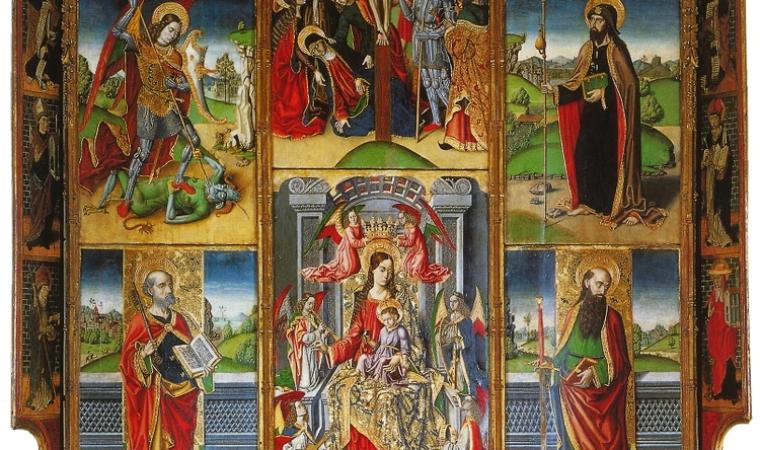Seen from outside, it is a beautiful church dating back to the late 15th century, with its colours, the grey ashlars on the façade and the yellow plaster, that integrate nicely with the façades of the houses in the historic centre of Tuili and with the landscape at the foot of the Giara Park. However, the Church of San Pietro’s real treasure lies inside it: the majestic retable, the altarpiece created by the Master of Castelsardo. In reality, there is no certain information about the artist. It is assumed that he came from Barcelona and worked mainly in what was then Castel Aragonese, today’s Castelsardo. The work was commissioned by the feudal lords of Tuili, the Santa Cruz family, and carried out at the end of the 15th century. You can admire it in the first chapel to the right of the entrance, dedicated to the Madonna del Carmine (Our Lady of Mount Carmel): it is five and a half metres high and three and a half metres wide, the decorative pattern is the classic one used for altarpieces, with the Madonna with child in the central-lower section and the Crucifixion above. On the sides, there are images of saints, while episodes from the life of Saint Peter are depicted on the predella.

See this place because...
It is the heart of a picturesque rural village, surrounded by an enchanting landscape, and has always contained artistic treasures, including a masterpiece of sacred Sardinian art
Pictures and videos
Nearby
Da Cagliari si imbocca la SS 131. Dopo aver attraversato Monastir si gira a destra. Percorsi circa 40 km ci si immette a destra sulla SS 197. Si passa in prossimità di Furtei e si attraversano Villamar, Las Plassas e Barumini. Poi si prende la SP 44 e si arriva a Tuili. Il contesto ambientale Il paese di Tuili è situato ai piedi della Giara di Gesturi, una delle zone più suggestive della Sardegna, ricca di attestazioni archeologiche. Nella parte alta del paese, a O dell'abitato, è ubicata la chiesa dedicata a San Pietro Apostolo. Si erge su un grande piazzale, di fronte all'ottocentesco palazzo Asquer.














